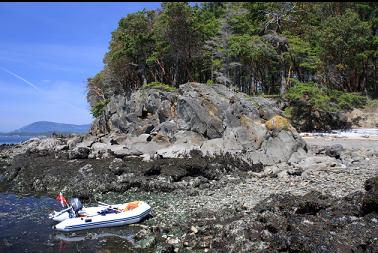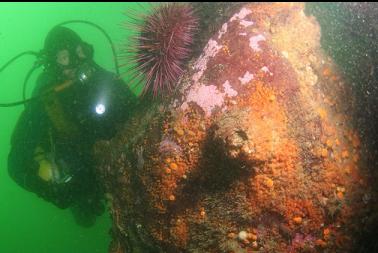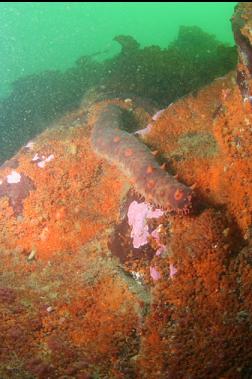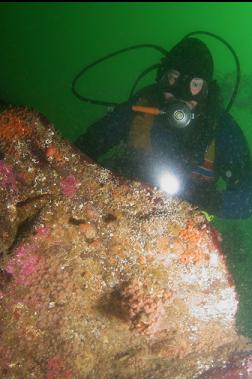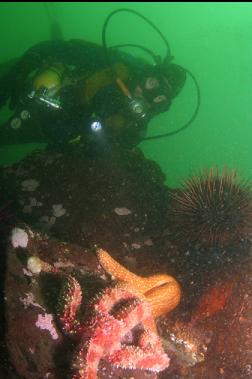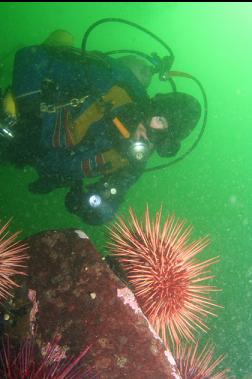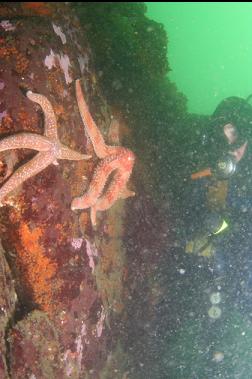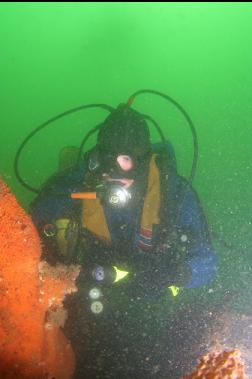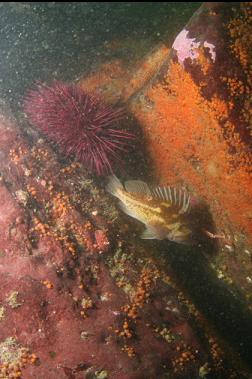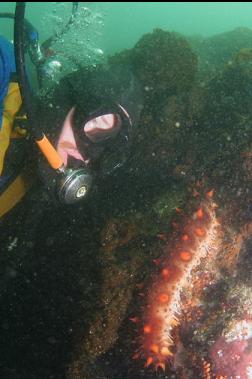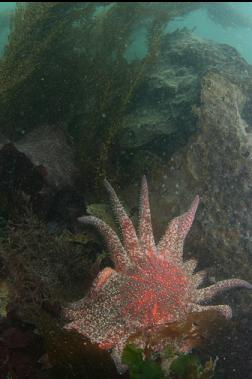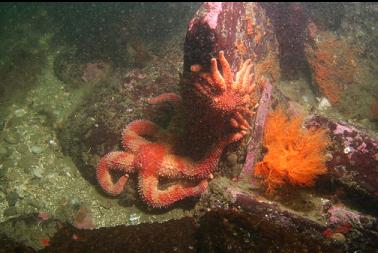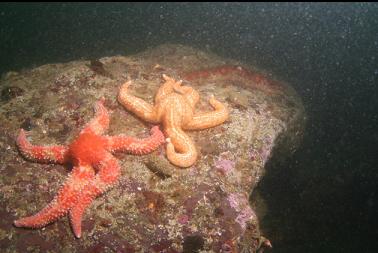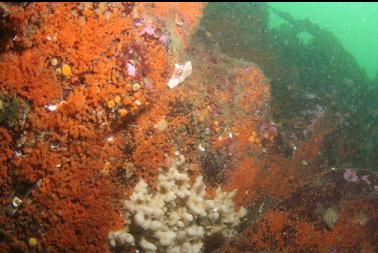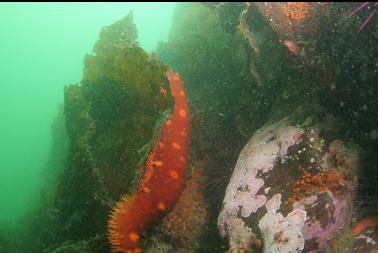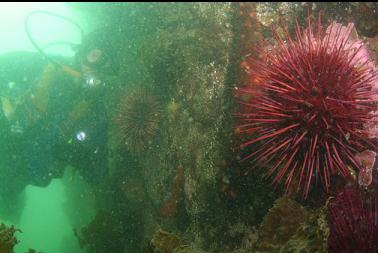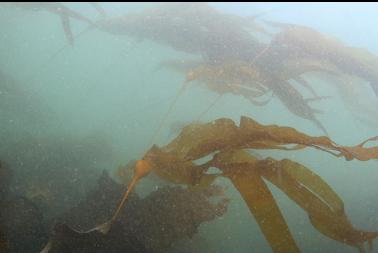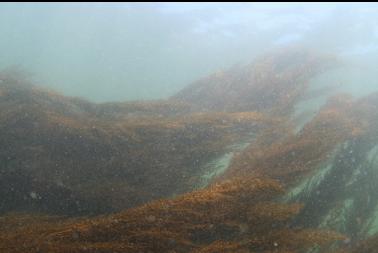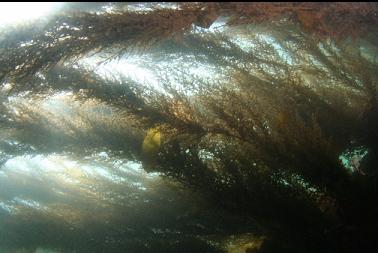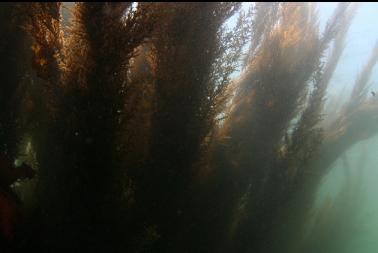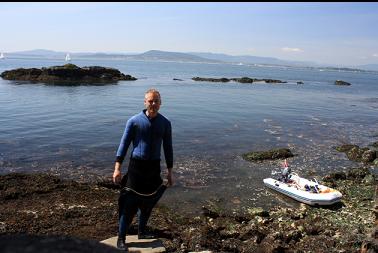This is one of the many islands in the Sidney area. It's just North of Sidney Spit. On the South side of the island near the Western end, there are a couple of small pebble beaches with a string of reefs about 100 meters offshore. These reefs are exposed at most tides. On the chart, the bottom drops down on the outside of these reefs to around 30 feet, before turning into a more gentle slope. This area is mentioned in the book "141 dives" as a safe, easy site. After diving earlier in the day at Dock Island, I didn't feel like dealing with current again and the small bays here seemed perfect for beaching my boat. -So I tried it on May 24, 2009. I swam out to the outside of the reefs and descended. The reefs continued down underwater as a steep slope of boulders, ledges and small walls. This ended at about 30 feet. The first thing I noticed was that I couldn't really notice much. The visibility was only 5-10 feet. The current was also pretty strong. I could just barely swim against it, but I had to take occasional breaks by hiding behind boulders to catch my breath. I was also a bit disappointed by the marine life. There weren't the piles of anemones and colour I'd expect from a dive with this kind of current. The most common invertebrate on the rocks was the tiny, orange colonial tunicate. These covered some of the rock faces. There were also clusters of giant urchins, california cucumbers, orange burrowing cucumbers and seastars. One strange thing about the seastars was that they were usually in pairs made up of 2 different species. I saw a cluster of zoanthids, some cup corals, patches of sponge and another rock with a greater variety of tunicates, but these hints of diversity were only occasional. There was an average amount of fish (copper, black and yellowtail rockfish hiding around the rocks, a small lingcod and a painted greenling). The base of this rocky drop-off (30 feet deep) ended in a sandy slope with some boulders and small rocky reefs. I followed this down to about 60 feet deep, but most of the life seemed to be in the shallower, steeper area. Of course with the bad visibility it was difficult to get a proper idea of the topography here. I think if this was a shore dive close to town and the visibility was better, it would be a pretty popular site (it sort of reminded me of Spring Bay). With so many other islands to have a look at in the Sidney area, I don't think I'll come back here again unless I could be guaranteed good visibility and I'd already tried everywhere else.


